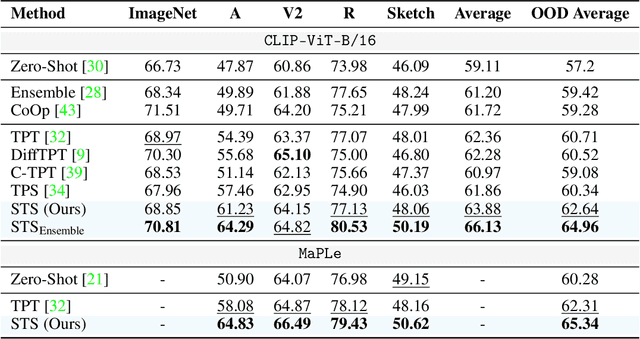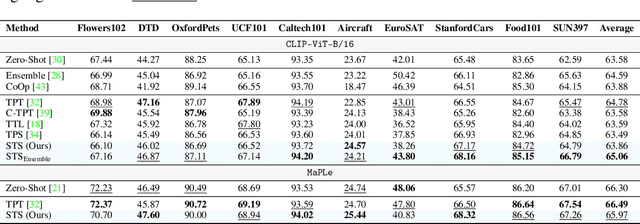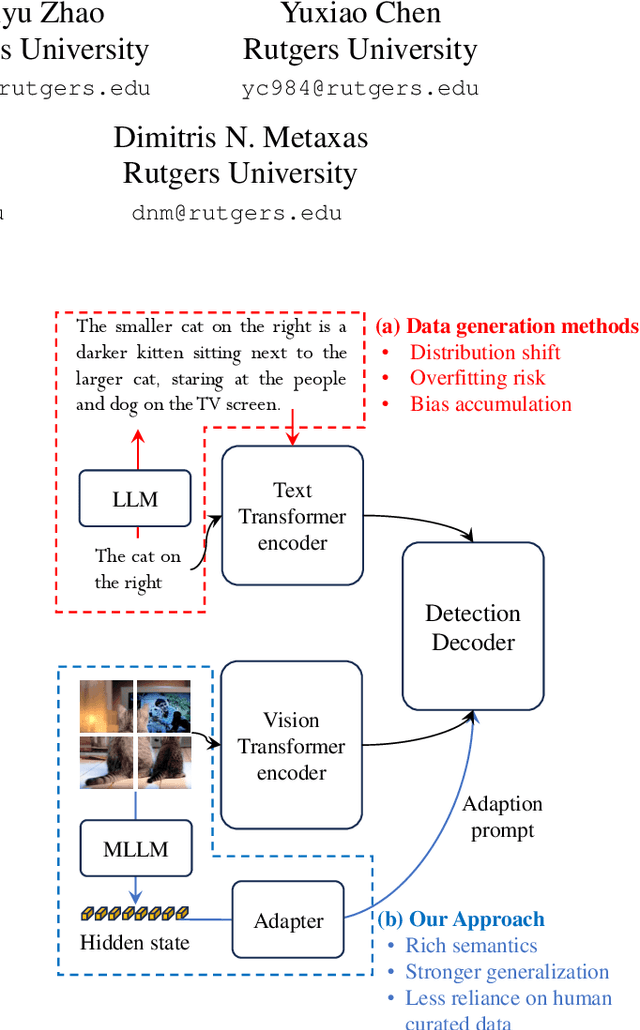Dimitris N. Metaxas
Rutgers University
Sparsity-Controllable Dynamic Top-p MoE for Large Foundation Model Pre-training
Dec 16, 2025Abstract:Sparse Mixture-of-Experts (MoE) architectures effectively scale model capacity by activating only a subset of experts for each input token. However, the standard Top-k routing strategy imposes a uniform sparsity pattern that ignores the varying difficulty of tokens. While Top-p routing offers a flexible alternative, existing implementations typically rely on a fixed global probability threshold, which results in uncontrolled computational costs and sensitivity to hyperparameter selection. In this paper, we propose DTop-p MoE, a sparsity-controllable dynamic Top-p routing mechanism. To resolve the challenge of optimizing a non-differentiable threshold, we utilize a Proportional-Integral (PI) Controller that dynamically adjusts the probability threshold to align the running activated-expert sparsity with a specified target. Furthermore, we introduce a dynamic routing normalization mechanism that adapts layer-wise routing logits, allowing different layers to learn distinct expert-selection patterns while utilizing a global probability threshold. Extensive experiments on Large Language Models and Diffusion Transformers demonstrate that DTop-p consistently outperforms both Top-k and fixed-threshold Top-p baselines. Our analysis confirms that DTop-p maintains precise control over the number of activated experts while adaptively allocating resources across different tokens and layers. Furthermore, DTop-p exhibits strong scaling properties with respect to expert granularity, expert capacity, model size, and dataset size, offering a robust framework for large-scale MoE pre-training.
Test-Time Spectrum-Aware Latent Steering for Zero-Shot Generalization in Vision-Language Models
Nov 12, 2025



Abstract:Vision-Language Models (VLMs) excel at zero-shot inference but often degrade under test-time domain shifts. For this reason, episodic test-time adaptation strategies have recently emerged as powerful techniques for adapting VLMs to a single unlabeled image. However, existing adaptation strategies, such as test-time prompt tuning, typically require backpropagating through large encoder weights or altering core model components. In this work, we introduce Spectrum-Aware Test-Time Steering (STS), a lightweight adaptation framework that extracts a spectral subspace from the textual embeddings to define principal semantic directions and learns to steer latent representations in a spectrum-aware manner by adapting a small number of per-sample shift parameters to minimize entropy across augmented views. STS operates entirely at inference in the latent space, without backpropagation through or modification of the frozen encoders. Building on standard evaluation protocols, our comprehensive experiments demonstrate that STS largely surpasses or compares favorably against state-of-the-art test-time adaptation methods, while introducing only a handful of additional parameters and achieving inference speeds up to 8x faster with a 12x smaller memory footprint than conventional test-time prompt tuning. The code is available at https://github.com/kdafnis/STS.
Large Sign Language Models: Toward 3D American Sign Language Translation
Nov 11, 2025Abstract:We present Large Sign Language Models (LSLM), a novel framework for translating 3D American Sign Language (ASL) by leveraging Large Language Models (LLMs) as the backbone, which can benefit hearing-impaired individuals' virtual communication. Unlike existing sign language recognition methods that rely on 2D video, our approach directly utilizes 3D sign language data to capture rich spatial, gestural, and depth information in 3D scenes. This enables more accurate and resilient translation, enhancing digital communication accessibility for the hearing-impaired community. Beyond the task of ASL translation, our work explores the integration of complex, embodied multimodal languages into the processing capabilities of LLMs, moving beyond purely text-based inputs to broaden their understanding of human communication. We investigate both direct translation from 3D gesture features to text and an instruction-guided setting where translations can be modulated by external prompts, offering greater flexibility. This work provides a foundational step toward inclusive, multimodal intelligent systems capable of understanding diverse forms of language.
Your Reward Function for RL is Your Best PRM for Search: Unifying RL and Search-Based TTS
Aug 19, 2025Abstract:Test-time scaling (TTS) for large language models (LLMs) has thus far fallen into two largely separate paradigms: (1) reinforcement learning (RL) methods that optimize sparse outcome-based rewards, yet suffer from instability and low sample efficiency; and (2) search-based techniques guided by independently trained, static process reward models (PRMs), which require expensive human- or LLM-generated labels and often degrade under distribution shifts. In this paper, we introduce AIRL-S, the first natural unification of RL-based and search-based TTS. Central to AIRL-S is the insight that the reward function learned during RL training inherently represents the ideal PRM for guiding downstream search. Specifically, we leverage adversarial inverse reinforcement learning (AIRL) combined with group relative policy optimization (GRPO) to learn a dense, dynamic PRM directly from correct reasoning traces, entirely eliminating the need for labeled intermediate process data. At inference, the resulting PRM simultaneously serves as the critic for RL rollouts and as a heuristic to effectively guide search procedures, facilitating robust reasoning chain extension, mitigating reward hacking, and enhancing cross-task generalization. Experimental results across eight benchmarks, including mathematics, scientific reasoning, and code generation, demonstrate that our unified approach improves performance by 9 % on average over the base model, matching GPT-4o. Furthermore, when integrated into multiple search algorithms, our PRM consistently outperforms all baseline PRMs trained with labeled data. These results underscore that, indeed, your reward function for RL is your best PRM for search, providing a robust and cost-effective solution to complex reasoning tasks in LLMs.
SignX: The Foundation Model for Sign Recognition
Apr 22, 2025Abstract:The complexity of sign language data processing brings many challenges. The current approach to recognition of ASL signs aims to translate RGB sign language videos through pose information into English-based ID glosses, which serve to uniquely identify ASL signs. Note that there is no shared convention for assigning such glosses to ASL signs, so it is essential that the same glossing conventions are used for all of the data in the datasets that are employed. This paper proposes SignX, a foundation model framework for sign recognition. It is a concise yet powerful framework applicable to multiple human activity recognition scenarios. First, we developed a Pose2Gloss component based on an inverse diffusion model, which contains a multi-track pose fusion layer that unifies five of the most powerful pose information sources--SMPLer-X, DWPose, Mediapipe, PrimeDepth, and Sapiens Segmentation--into a single latent pose representation. Second, we trained a Video2Pose module based on ViT that can directly convert raw video into signer pose representation. Through this 2-stage training framework, we enable sign language recognition models to be compatible with existing pose formats, laying the foundation for the common pose estimation necessary for sign recognition. Experimental results show that SignX can recognize signs from sign language video, producing predicted gloss representations with greater accuracy than has been reported in prior work.
Two Heads are Better Than One: Test-time Scaling of Multi-agent Collaborative Reasoning
Apr 14, 2025Abstract:Multi-agent systems (MAS) built on large language models (LLMs) offer a promising path toward solving complex, real-world tasks that single-agent systems often struggle to manage. While recent advancements in test-time scaling (TTS) have significantly improved single-agent performance on challenging reasoning tasks, how to effectively scale collaboration and reasoning in MAS remains an open question. In this work, we introduce an adaptive multi-agent framework designed to enhance collaborative reasoning through both model-level training and system-level coordination. We construct M500, a high-quality dataset containing 500 multi-agent collaborative reasoning traces, and fine-tune Qwen2.5-32B-Instruct on this dataset to produce M1-32B, a model optimized for multi-agent collaboration. To further enable adaptive reasoning, we propose a novel CEO agent that dynamically manages the discussion process, guiding agent collaboration and adjusting reasoning depth for more effective problem-solving. Evaluated in an open-source MAS across a range of tasks-including general understanding, mathematical reasoning, and coding-our system significantly outperforms strong baselines. For instance, M1-32B achieves 12% improvement on GPQA-Diamond, 41% on AIME2024, and 10% on MBPP-Sanitized, matching the performance of state-of-the-art models like DeepSeek-R1 on some tasks. These results highlight the importance of both learned collaboration and adaptive coordination in scaling multi-agent reasoning. Code is available at https://github.com/jincan333/MAS-TTS
Show and Segment: Universal Medical Image Segmentation via In-Context Learning
Mar 25, 2025Abstract:Medical image segmentation remains challenging due to the vast diversity of anatomical structures, imaging modalities, and segmentation tasks. While deep learning has made significant advances, current approaches struggle to generalize as they require task-specific training or fine-tuning on unseen classes. We present Iris, a novel In-context Reference Image guided Segmentation framework that enables flexible adaptation to novel tasks through the use of reference examples without fine-tuning. At its core, Iris features a lightweight context task encoding module that distills task-specific information from reference context image-label pairs. This rich context embedding information is used to guide the segmentation of target objects. By decoupling task encoding from inference, Iris supports diverse strategies from one-shot inference and context example ensemble to object-level context example retrieval and in-context tuning. Through comprehensive evaluation across twelve datasets, we demonstrate that Iris performs strongly compared to task-specific models on in-distribution tasks. On seven held-out datasets, Iris shows superior generalization to out-of-distribution data and unseen classes. Further, Iris's task encoding module can automatically discover anatomical relationships across datasets and modalities, offering insights into medical objects without explicit anatomical supervision.
LED: LLM Enhanced Open-Vocabulary Object Detection without Human Curated Data Generation
Mar 18, 2025



Abstract:Large foundation models trained on large-scale visual-text data can significantly enhance Open Vocabulary Object Detection (OVD) through data generation. However, this may lead to biased synthetic data and overfitting to specific configurations. It can sidestep biases of manually curated data generation by directly leveraging hidden states of Large Language Models (LLMs), which is surprisingly rarely explored. This paper presents a systematic method to enhance visual grounding by utilizing decoder layers of the LLM of a MLLM. We introduce a zero-initialized cross-attention adapter to enable efficient knowledge transfer from LLMs to object detectors, an new approach called LED (LLM Enhanced Open-Vocabulary Object Detection). We demonstrate that intermediate hidden states from early LLM layers retain strong spatial-semantic correlations that are beneficial to grounding tasks. Experiments show that our adaptation strategy significantly enhances the performance on complex free-form text queries while remaining the same on plain categories. With our adaptation, Qwen2-0.5B with Swin-T as the vision encoder improves GroundingDINO by 2.33% on Omnilabel, at the overhead of 8.7% more GFLOPs. Qwen2-0.5B with a larger vision encoder can further boost the performance by 6.22%. We further validate our design by ablating on varied adapter architectures, sizes of LLMs, and which layers to add adaptation.
Snapmoji: Instant Generation of Animatable Dual-Stylized Avatars
Mar 15, 2025



Abstract:The increasing popularity of personalized avatar systems, such as Snapchat Bitmojis and Apple Memojis, highlights the growing demand for digital self-representation. Despite their widespread use, existing avatar platforms face significant limitations, including restricted expressivity due to predefined assets, tedious customization processes, or inefficient rendering requirements. Addressing these shortcomings, we introduce Snapmoji, an avatar generation system that instantly creates animatable, dual-stylized avatars from a selfie. We propose Gaussian Domain Adaptation (GDA), which is pre-trained on large-scale Gaussian models using 3D data from sources such as Objaverse and fine-tuned with 2D style transfer tasks, endowing it with a rich 3D prior. This enables Snapmoji to transform a selfie into a primary stylized avatar, like the Bitmoji style, and apply a secondary style, such as Plastic Toy or Alien, all while preserving the user's identity and the primary style's integrity. Our system is capable of producing 3D Gaussian avatars that support dynamic animation, including accurate facial expression transfer. Designed for efficiency, Snapmoji achieves selfie-to-avatar conversion in just 0.9 seconds and supports real-time interactions on mobile devices at 30 to 40 frames per second. Extensive testing confirms that Snapmoji outperforms existing methods in versatility and speed, making it a convenient tool for automatic avatar creation in various styles.
Towards Universal Learning-based Model for Cardiac Image Reconstruction: Summary of the CMRxRecon2024 Challenge
Mar 05, 2025Abstract:Cardiovascular magnetic resonance (CMR) offers diverse imaging contrasts for assessment of cardiac function and tissue characterization. However, acquiring each single CMR modality is often time-consuming, and comprehensive clinical protocols require multiple modalities with various sampling patterns, further extending the overall acquisition time and increasing susceptibility to motion artifacts. Existing deep learning-based reconstruction methods are often designed for specific acquisition parameters, which limits their ability to generalize across a variety of scan scenarios. As part of the CMRxRecon Series, the CMRxRecon2024 challenge provides diverse datasets encompassing multi-modality multi-view imaging with various sampling patterns, and a platform for the international community to develop and benchmark reconstruction solutions in two well-crafted tasks. Task 1 is a modality-universal setting, evaluating the out-of-distribution generalization of the reconstructed model, while Task 2 follows sampling-universal setting assessing the one-for-all adaptability of the universal model. Main contributions include providing the first and largest publicly available multi-modality, multi-view cardiac k-space dataset; developing a benchmarking platform that simulates clinical acceleration protocols, with a shared code library and tutorial for various k-t undersampling patterns and data processing; giving technical insights of enhanced data consistency based on physic-informed networks and adaptive prompt-learning embedding to be versatile to different clinical settings; additional finding on evaluation metrics to address the limitations of conventional ground-truth references in universal reconstruction tasks.
 Add to Chrome
Add to Chrome Add to Firefox
Add to Firefox Add to Edge
Add to Edge